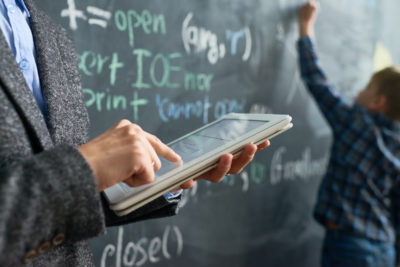The COVID-19 pandemic forced schools to quickly pivot to online learning, turning living rooms and kitchen tables into classrooms for 55 million students in the spring of 2020. As the school year started again in the fall, for a majority of those students, they returned to google hangouts and zoom calls. And even now, two months into 2021, millions of students are still learning in full remote or hybrid classrooms, still sitting down in their home learning rooms and logging into their desktops, laptops, Chromebooks, or tablets to join their digital classroom.
The need to understand devices and internet access in homes across states and districts has put digital equity at the forefront of education and is more important than ever before. We’ve long wrestled with the homework gap, now in the age of COVID we wrestle with the realities of disconnected learning due to technology, platforms, hybrid learning environments and even proper internet access.
States and districts across the country have made digital equity a priority in efforts to restart and recover from the pandemic. The first step in being able to address the digital equity gaps is understanding the problem, and that means data collection and analysis. Prior to the pandemic, we had limited information on where our digital equity gaps were outside the school buildings themselves. We often relied on one-off surveys and fragmented information to make assumptions about the scope of the homework gap. When faced with the reality of universal online learning in March of 2020, we needed to quickly rethink our approach. The Ed-Fi community sprung into action – working collaboratively to determine what data would need to be collected in a standard approach.
The resulting draft standard was released in July and through state collaboration and hard work by the Student Information System vendors, the draft standard was operational by September. With leveraging the use of the core Ed-Fi student data element’s, SIS systems are now able to capture student-level digital access data. Answering important questions like:
- Does the student have reliable internet access in their residential environment?
- Does the student have access to a dedicated learning device?
The availability of this information in the SIS means that it can be updated and maintained as a student’s situation changes. It can also be used across a district to support students immediately and, when appropriate, shared with the state agency to target state and federal resources to communities in need of access.
Leveraging this collective state work with the Ed-Fi community, the Wisconsin Department of Public Instruction was able to quickly help school districts collect and use data on both broadband availability and device access through the WISEdata and WISEdash applications powered by the Ed-Fi API. As a leader in these efforts, Wisconsin has been able to undertake several initiatives to help provide better access to digital learning opportunities for their students. “Partnerships matter. The Ed Fi Alliance, Education Superhighway, and CCSSO were all active supporters of the work from the beginning. They, too, saw the need and vision. They marshaled resources to establish the baseline from which we implemented the digital equity gap collection, from data definition and governance through application deployment,” said Kurt Kiefer, Assistant State Superintendent for Wisconsin Department of Public Instruction.
All students must have access to robust broadband and digital learning resources whether in a school building or in their home, in rural areas or in urban centers, during a pandemic or not. Understanding digital equity and the data in real-time is essential to closing these gaps and supporting ALL students in ALL learning environments, once and for all.

